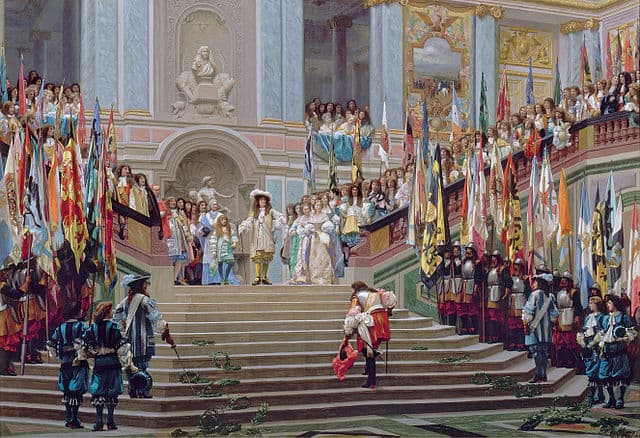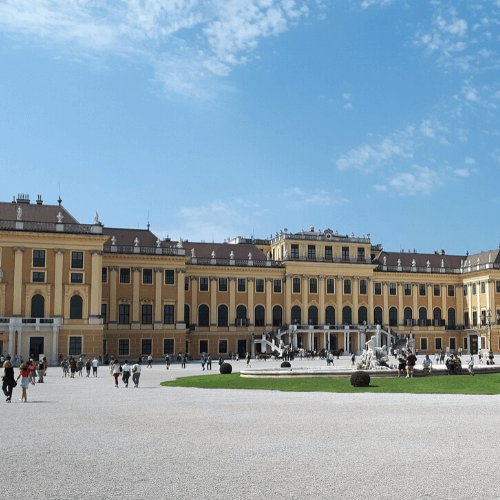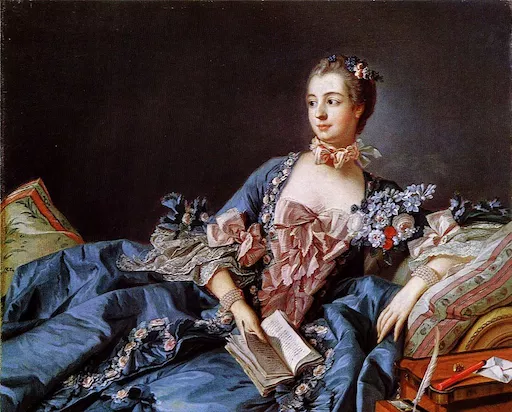Change of Guard at Buckingham Palace
Securing the Crown: The magnificent majesty of the Changing of the Guard
The Changing of the Guard at Buckingham Palace, often referred to as "Guard Mounting," is one of London's most iconic and impressive traditions. With military precision, musical accompaniment, and a grandeur that mirrors the majestic palace, it's a spectacle that reflects England's rich history of royal ritual and pageantry.
It's a free spectacle that draws crowds from all over the world, and it's a great way to experience the pomp and ceremony of the British monarchy.
DISCLOSURE: I get commissions for purchases made through some of the links in this article.
History of the Changing of the Guard
The Changing of the Guard dates back to the 17th century when King Charles II restored the monarchy after the English Civil War. At the time, there was a great deal of unrest and political instability, so the King wanted to make sure that his palaces were well-guarded.
Established in 1660, the Household Division we see today has been serving the monarchy with unmatched loyalty and steadfastness, instantly recognizable in their towering Buckingham palace guards hats.
Dressed in red tunics and bearskin hats, the palace guards, known as the Queen's Guard, are made up of soldiers from five British army regiments. Despite their ceremonial role, these are fully trained, active soldiers capable of responding to any potential threat.
It's interesting to note that the Changing of Guard was initially founded as a vital defensive routine. It ensured that at no point was the Palace left unprotected—a tradition that continues to this day, although ceremonial aspects have become the main attraction.
Over the decades, the ceremony has seen several modifications, including the Queen's Guard's inclusion from various regiments—both from the UK and other Commonwealth countries—which has further enriched this tradition.
The Changing of the Guard isn't just limited to Buckingham Palace. It can also be observed at the Horse Guards Arch, where the Household Cavalry executes it, offering an equally fascinating spectacle of mounted soldiers in historical uniforms.
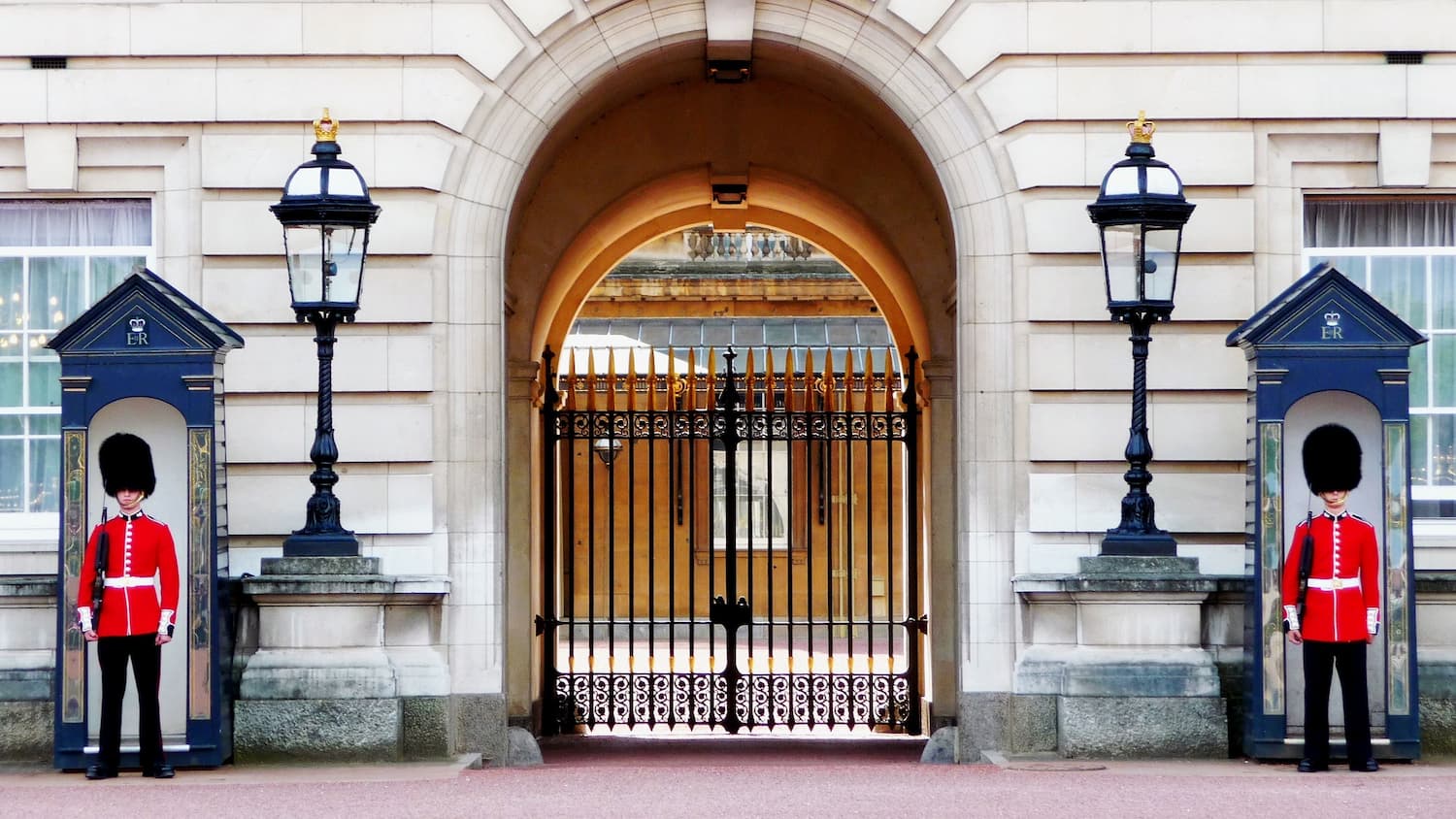
The Changing of the Guard Ceremony
In essence, the Changing of the Guard is a ceremonial transfer of responsibilities among the palace guards.
It is a complex and elaborate ceremony, with many different traditions and rituals. Here are a few of the most important ones:
- The ceremony takes place outside Buckingham Palace from 10:45 a.m., regardless of weather, and lasts around 45 minutes.
- The Old Guard, which has been on duty for the past 24 hours, marches from Wellington Barracks St. James's Palace to Buckingham Palace.
- The New Guard, which will be taking over duty, marches from Wellington Barracks to Buckingham Palace.
- The two Guards meet in the forecourt of Buckingham Palace, where they perform a series of drills and marches.
- During the event, the New Guard is accompanied by a band playing traditional military music.
- The customary 'relief' takes place at the Palace's central gatehouse. Simultaneously, the guard main body marches across the forecourt, while the sentries being relieved leave their posts with precise maneuvers developed over centuries.
- The Old Guard then hands over responsibility to the New Guard, and the ceremony comes to an end.
The Changing of the Guard is a popular tourist attraction, but it's also an important working ceremony. The Guards are still responsible for protecting Buckingham Palace and the Royal Family.
Visitors are often impressed by the synchrony and accuracy of the ceremonial procedure, particularly touched when the guard faints at Buckingham Palace, showcasing the guards' dedication and tenacity. Even under adverse weather conditions or extreme temperatures, they persist in upholding this grand tradition.
Practical Information
If you're planning to watch the Changing of the Guard, there are a few things you need to know:
- The ceremony takes place on Monday, Wednesday, Friday and Sunday at 10:45, except on some holidays
Occasionally, the Changing of the Guard may get cancelled due to inclement weather. It's recommended to check the ceremony schedule provided by the Household Division's official website to stay updated.
Despite starting mid-morning, crowd gathering begins much earlier, often around 9 a.m. Viewing is free, but securing a good vantage point requires arriving early.
The best places to view the ceremony are either alongside the Buckingham Palace railings or the Victoria Memorial. These spots offer a good overview of the palace forecourt, where the guards' formation and movement are best appreciated.
When I was in London and witnessed the ceremony, I was lucky to find a seat on the railing, giving us a grand overview of the ceremony. You must arrive early for such a spot.
Another tip for visitors: Try to watch the ceremony on a weekday if possible. Weekends tend to be busier, making securing a good vantage point more challenging. So plan out your week for capturing this grand spectacle.
Avoid the crowd tips:
You can also choose to follow the old or the new guard from the Barracks or St. James'' palace. You should be there at about 10.30 am.
Or you go see the change of the guard at Windsor Castle: Every Tuesday, Thursday & Saturday
The Buckingham Palace Guards hats
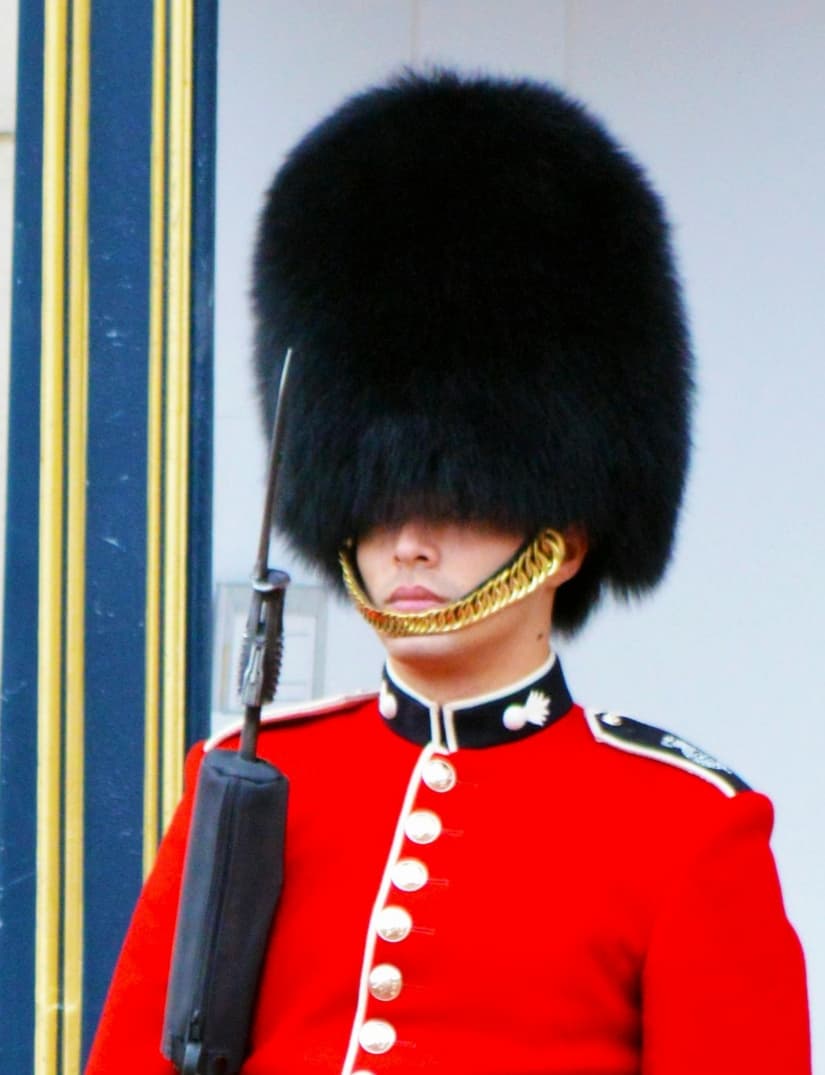 The Bearskin Cap
The Bearskin CapWe cannot finnish this webpage without having talked about the ridiculous huge Buckingham Palace guards' hats!
The Buckingham Palace Guards hats—officially known as bearskin caps—are a sight to behold and a popular tourist attraction on their own.
Why do they wear such big hats?
- They make the guards appear taller and more intimidating. The hats are about 18 inches tall and weigh up to 10 pounds. This makes the guards look larger and more imposing, which was seen as a deterrent to enemies in the past.
- They protect them from the elements. The bearskin hats are made from real bearskin, which is a very thick and durable material. This helps to protect the guards from the sun, rain, and snow.
The bearskin hats were first introduced into the British Army in the early 18th century. They were originally worn by grenadiers, who were elite soldiers who were known for their size and strength. The hats were eventually adopted by all foot guards regiments, and they have been worn by the guards at Buckingham Palace since the 1830s.
On occasion, the bearskin hats are also the reason for a Guard Fainting at Buckingham Palace. It is relatively rare, but it does happen occasionally. The most common causes of fainting are heat exhaustion and dehydration. Mind you, these guards work two-hour shifts, followed by four hours off. This is a demanding schedule, but it is necessary to ensure that the Palace is always protected.
The guards at Buckingham Palace are not expected to stand still for more than 10 minutes at a time. They are allowed to shuffle their feet, march in place, and even take a short break to stretch or drink some water. They are not allowed to leave their spot for the bathroom though!
The guards are also allowed to interact with tourists, but only in a limited way. They are not allowed to talk, but they can nod their heads or smile. They are also allowed to take photographs with tourists, but only if the tourists ask politely.
The guards are expected to remain alert and focused at all times, even when they are on their breaks. They must also be prepared to respond to any emergencies that may arise.
Contrary to popular belief, the guards are not just for show. The guards' primary duty is to protect Buckingham Palace and the Royal Family.
